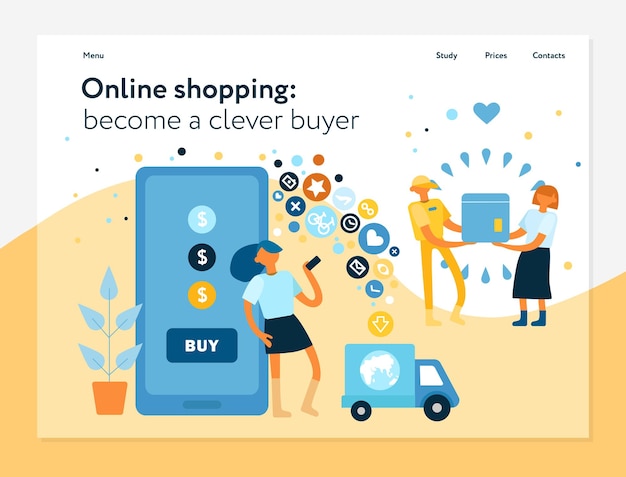The Ecommerce Boom: an In-Depth Analysis of Why Online Purchasing Is so Popular and the Selection of Goods Available for Purchase and Sale
The fast growth of ecommerce has changed the retail landscape, driven by technological advancements and moving customer preferences. As we explore the myriad factors fueling this ecommerce boom, it comes to be necessary to consider what this pattern implies for the future of retail and consumer habits. Ecommerce.
Elements Driving Ecommerce Growth
The fast development of ecommerce can be associated to numerous key factors that have transformed consumer habits and market dynamics. One significant vehicle driver is the advancement of innovation, especially the expansion of mobile phones and high-speed net. These technologies have made online shopping extra accessible, allowing consumers to surf and purchase products anytime and anywhere.
Additionally, the increase of social networks platforms has played an essential role in promoting ecommerce. Brands take advantage of these systems to engage with consumers, display their items, and drive traffic to their on-line shops. This integration of social media sites advertising and marketing with ecommerce has produced a smooth shopping experience that allures to a larger audience.
Additionally, the expanding acceptance of electronic repayment approaches has additionally added to ecommerce growth. Ecommerce. Customers are increasingly comfortable using credit report cards, digital wallets, and other online payment remedies, which improve the buying process and boost security
Last but not least, the ongoing globalization of markets has increased the reach of ecommerce, enabling companies to deal with a varied customer base throughout various geographical areas. Together, these elements have actually developed a robust foundation for the ongoing success and growth of ecommerce in the modern-day market.
Changing Consumer Actions

Furthermore, the surge of mobile business has actually played a critical role in altering investing in behaviors. Consumers are significantly using smart devices and tablets to surf and shop, causing even more spontaneous buying choices. The expectation for quick distribution and easy returns has actually additionally affected customer behavior, pressing stores to adapt their logistics and solution offerings accordingly.
Moreover, social media sites platforms have actually become important in forming consumer assumptions and affecting buying choices. The capability to share experiences and look for referrals online has fostered a much more engaged and educated customer. Therefore, consumers are currently most likely to study items extensively prior to purchasing, valuing openness and authenticity in brand communication. This developing landscape demands that retailers continue to be active, adjusting to the vibrant preferences these days's digital-savvy customers to stay competitive in the flourishing ecommerce market.

The Role of Innovation
In the rapidly progressing landscape of ecommerce, technology functions as a cornerstone for development and performance. The assimilation of innovative innovations has transformed how services important source run, allowing them to streamline procedures, boost client experiences, and take advantage of information analytics for tactical decision-making.
Among the most significant developments is the increase of man-made intelligence (AI) and maker learning, which encourage stores to individualize buying experiences. These technologies analyze customer habits and choices, enabling tailored suggestions and targeted advertising and marketing strategies. In addition, chatbots and virtual aides improve customer care, providing instant support and enhancing general engagement.

Furthermore, stock administration systems powered by modern technology allow services to enhance supply chains, making sure that items are readily offered to satisfy customer need. As modern technology remains to develop, its function in ecommerce will certainly remain critical, forming the future of retail and customer communications.
Diverse Product Offerings
A varied range of item offerings is important for ecommerce services intending to capture a broad customer base and satisfy varying consumer requirements. The modern online marketplace thrives on its capacity to present a considerable option of products, varying from electronics and fashion to specific niche products and handmade crafts. This range not only brings in a larger audience yet likewise encourages client loyalty, as buyers can find every little thing they require in one place.
Ecommerce systems can leverage varied product offerings to differentiate themselves from rivals. By curating special collections, supplying exclusive brands, and facilitating user-generated material, these businesses can enhance the purchasing experience and foster neighborhood involvement. The surge of global shipping has actually allowed customers to accessibility items from various cultures and regions, increasing their options beyond local offerings.
In addition, varied product assortments allow business to adapt to transforming consumer preferences and patterns. By analyzing buying data and consumer comments, businesses can fine-tune their stock and present new products that reverberate with their target market. On the whole, a durable and different item selection is a click basic column of ecommerce success, driving sales and establishing a strong brand name visibility in a jampacked electronic landscape.
Future Patterns in Online Shopping
The future of on the internet shopping is poised for transformative modifications driven by technical developments and progressing customer behaviors. Ecommerce. As expert system (AI) continues to enhance personalization, online merchants will increasingly utilize information analytics to customize item suggestions hop over to here and marketing techniques to private preferences. This shift towards personalization will promote deeper consumer engagement and loyalty
Additionally, the combination of augmented reality (AR) and virtual fact (VIRTUAL REALITY) innovations will certainly transform the purchasing experience, allowing consumers to visualize items in their very own settings prior to buying. This innovation will certainly reduce return prices and improve consumer satisfaction.
An additional pattern is the surge of social commerce, where social media sites systems become indispensable to the buying journey. Brands are progressively using these systems to produce immersive shopping experiences and assist in straight purchases, taking advantage of their substantial user bases.
Additionally, sustainability will certainly play a vital duty in forming customer selections. Eco-conscious customers will demand openness pertaining to item sourcing and ecological influence, motivating retailers to take on sustainable techniques.
Verdict
To conclude, the ecommerce boom is driven by a merging of elements including technological improvements, developing consumer behaviors, and a substantial variety of items. The ease of on-line shopping and the surge of mobile commerce help with spontaneous acquiring, while diverse offerings cater to different preferences. As innovation remains to advance, the ecommerce landscape will certainly adjust and broaden, making certain sustained growth and boosted customer experiences in the digital market. The future of on-line buying continues to be appealing and dynamic.